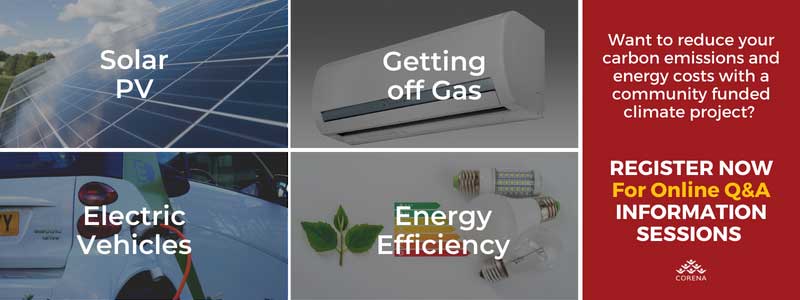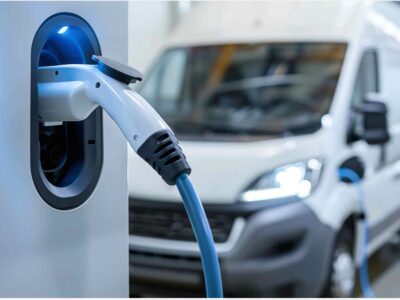Many people are not clear about how much time is needed to charge an EV. One of the most common questions we get about electric vehicles is “How long does it take to “fill” them up?” and how will this affect the use of the vehicle by staff? It’s an important question for non profits looking to trial electric vehicles.
Charging electric vehicles has become a topic of great interest as more of us embrace sustainable transportation. While the benefits of EVs are undeniable, another common question lingers: Will I be able to charge it fast enough to travel the distances I need to?
Let’s break down the factors affecting charging times, discuss various electric vehicle batteries, and explore the wonders of EV fast charging.
Learn more in Electric Vehicles Guide for Non Profits
A fossil fuel vehicle obviously only takes a few minutes to fill while an EV can take many hours to charge from completely empty to full. When non profits are looking at electric fleet vehicles they understandably wonder if this longer charge time might mean a vehicle will be unavailable when they need it.
Change your perspective – Always Be Charging
The answer is to look at “refuelling” EVs in a completely different way. People often look at charging their electric vehicle like they would refuel their car – driving until the fuel tank is nearly empty and then completely filling it. However, when you have a workplace or home charger the vehicle can be constantly topped up meaning it never needs to charge from empty to full. The battery will rarely be completely empty and will always be ready for its next trip if you follow the ABC’s – Always Be Charging!
If you plug in your car every time it is returned to the office (or home) it means your vehicle will always have enough charge for your next trip and you won’t get stuck. Charging in this way avoids unnecessary waiting because the car is charging while it is normally parked. In fact it can even save time on the trip to the fuel station!
However to avoid the charging time being an issue for your organisation, it’s important to consider a few things.
1. The length of the individual trips your vehicle is required for.
An ideal use case for electric fleet vehicles is a vehicle that is used for commuting and/or attending local meetings or home visits during the day and returns to the office for charging at some point during the day. In this case a typical electric passenger vehicle should easily have the range to cover this type of usage. You can work this out by looking at the typical use patterns of your fleet vehicles and how often and how long they are at the office and comparing it to the WLTP1 range of the vehicle you are looking at.
2. Staff education
When introducing electric vehicles it is vital to educate staff that they need to plug in every time they are at the office. Signs and reminders may be needed until this becomes a habit. You may like to have a short “Intro to EVs” session at the office to explain the significant benefits electric vehicles bring to your organisation to help get them on board.
Learn more in How To Make The Most Of Your Solar Panels To Charge Electric Vehicles
3. Electric vehicle batteries
The type and capacity of your electric vehicle batteries play a vital role in determining charging times. Newer EV models often come with larger batteries, offering increased range but potentially longer charging durations. It’s essential to consider your daily driving needs and charging infrastructure when choosing an EV. You may find that once you analyse your trip distances you could get away with a shorter range vehicle reducing your up front purchase cost.
Learn more in Commercial Electric Vehicles For Organisations
You may also like to consider a vehicle with a Lithium Iron Phosphate battery (called LFP or LifePO4). These batteries can be charged to 100% with minimal impact on battery life potentially making them more robust in a fleet situation. A large proportion of the new cars available at the moment have this battery chemistry as it is cheaper, has a longer lifespan, and is less prone to fires. Other battery chemistries (such as NMC) may be more expensive and recommend that charging be limited to 80% where possible to preserve battery life.
4. Charger type
Charger type
The type of charger you have at your office will also obviously affect how fast you can top up your vehicle.
- Charging Level: There are three main types of chargers , each with varying speeds:
- Level 1 (AC) : The portable charger that comes with the car and the slowest option. It adds roughly 6-12kms of range per hour. It requires no special installation and just plugs in to a powerpoint.
- Level 2 (AC) : The most common option for home and office charging stations. It adds about 50-100ks of range per hour depending on the charger and your vehicle’s maximum slow charging speed2. These are usually either 7kW or 22kW chargers. These require installation by a licensed electrician.
- Level 3 (DC) : These are usually public fast chargers and would be too expensive for most office situations.
For commuting/meetings and site visits where you are always charging while the car is parked at the office, an inexpensive Level 2 charger is likely to be sufficient. A level 1 charger may only be sufficient if the vehicle is only used for short trips or is plugged in for the most of the day.
5. Other factors affecting charger speed
State of Charge (SoC): The existing battery level affects charging time. Charging from 20% to 80% is faster than charging from 80% to 100%.
Temperature: Extreme temperatures, both hot and cold, can affect charging speeds and driving range. Batteries operate most efficiently in moderate temperatures.
Learn more in 11 Electric Vehicle Benefits You Might Not Know About

EV Fast Charging: A handy backup
EV fast charging, also known as DC fast charging, is revolutionising the electric vehicle experience. These high-powered charging stations can replenish your battery significantly faster than Level 1 or Level 2 chargers, making long-distance travel more feasible.
Public fast chargers are becoming faster and more common all the time so if you need this as a backup to your office chargers check Plugshare to see the fast chargers close to you.
Learn more in Emerging Electric Vehicle Types, Technologies & Innovations
- Check these Australian Electric Vehicle Association (AEVA) specification sheets to see the Worldwide Harmonised Light Vehicles Test Procedure (WLTP) range for various models available in Australia – https://aeva.asn.au/ev-summary-specification-sheets/
- The charging speed varies amongst vehicles. Check these specification sheets to see the maximum charge rate for slow (AC) chargers and fast (DC) chargers. – https://aeva.asn.au/ev-summary-specification-sheets/
Electric Vehicles Funding For Non-Profit, Community Organisations & Social Enterprises
In summary, understanding your fleet’s usage patterns and changing your mindset when it comes to “refuelling” may mean electric vehicles could work for your organisation. The fuel savings, maintenance savings, FBT exemption and, in some states, rebates often make the total cost of ownership very attractive. CORENA also offers zero interest loans for electric vehicles making the business case even better.
Here at CORENA, We receive, record, and transparently report voluntary contributions from the public. We use that money to give interest-free loans to fund:
- Electric Vehicles
- Solar Panels (Can be used to charge electric vehicles)
- Energy Efficiency
- Getting Off Gas – Replacement of fossil gas appliances with electric alternatives
- A combination of the above
We actively support the adoption of electric vehicles and provide interest-free loans to eligible organisations. You don’t pay any interest on your CORENA loan, and the quarterly loan repayments are set to be a little less than the savings on your operating costs averaged over a year.
To learn more, check out how to apply for a project loan, or register for one of our upcoming Online Q&A Information Sessions.


